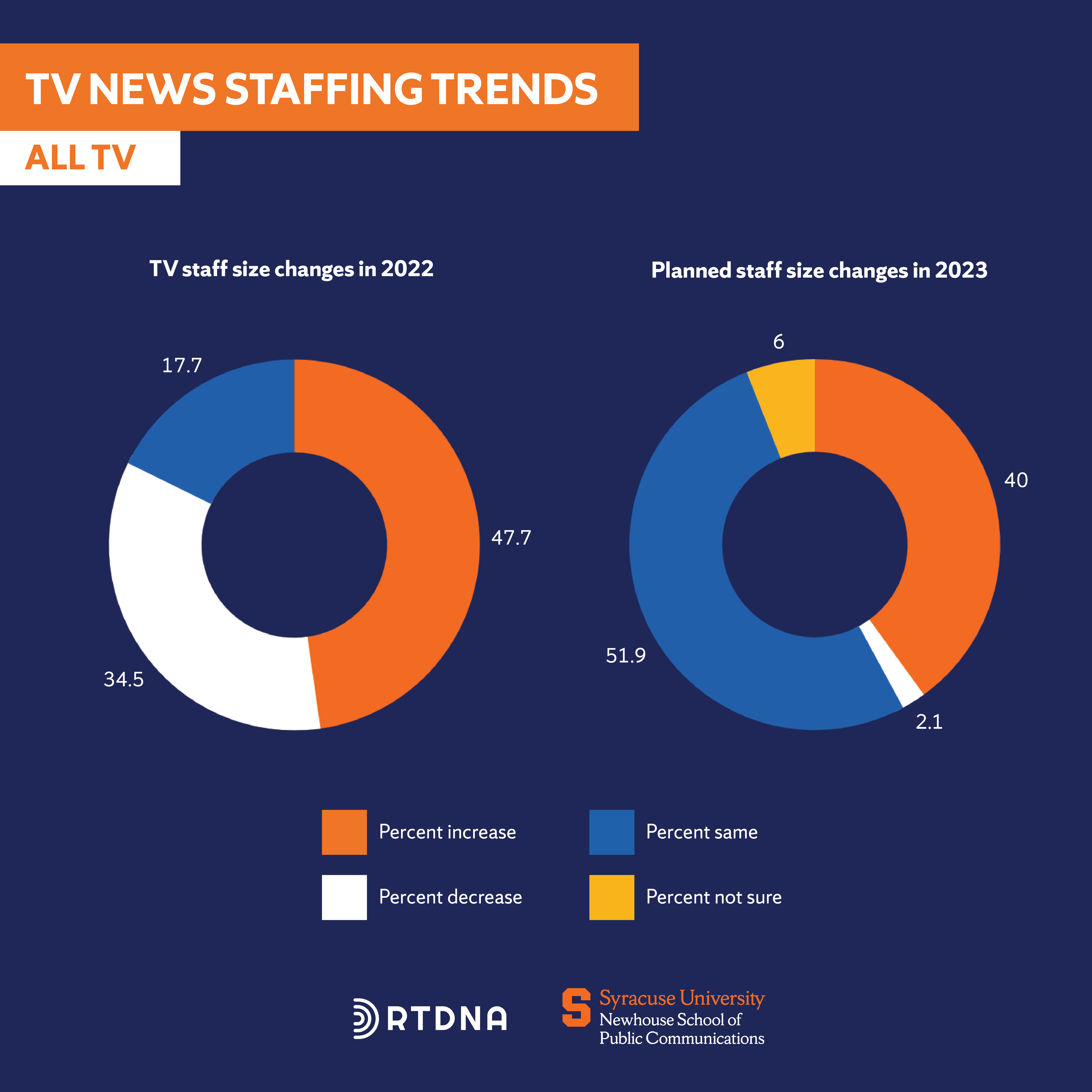Burnout Getting Worse in Local News, per RTDNA/Syracuse Survey

By Bob Papper and Keren Henderson
More than two-thirds (68.9%) of all TV news directors say staff burnout is worse now than it was one year ago.
That’s the latest finding of the 2023 RTDNA/Newhouse School at Syracuse University Survey.
The percentage was a bit lower in top 25 markets (at 59.4%), but all other market sizes were in the two-thirds range or higher, peaking in the smallest markets at 77.3%. Stations in both the Northeast and the Midwest were near 75%, but both the South and West were in the mid-60s.
Almost nine out of ten news directors (88.8%) say they’re trying to do something about it, and their tactics vary. Some are making substantive changes to salaries and schedules, and others are offering more mental health resources to staff. Others still have taken more creative approaches to boost staff morale: a fun committee, gym memberships, cake, pizza, staff potlucks and midday nature walks.

According to the survey, total (full-time) local TV news employment is up 5.1% from last year — to 27,600. That’s a big jump (or correction) from last year but remains behind the all-time high of 28,000 set in 2021.
In the Survey, real staff growth came mostly in top 50 markets. Stations in markets 51 to 100 went down; 101 to 150 held steady; and 151+ edged down in average and up in median. A toss-up.
Read the full TV staffing report
Related: Download the 2023 TV Salary Report

In local radio newsrooms, the typical (median) radio news operation in 2023 had a full-time news staff of two — for the first time since Bob started doing these surveys 29 years ago (we have always reported a median staff of one until now). The increase was led by non-commercial radio stations which came in with a median of three news people; commercial radio remained at one.
This year’s numbers indicate that overall news staffing has improved since last year. It’s not a lot, but the average radio news operation increased from 3 full-timers to 3.2 while part time remains unchanged at 1.6. However, breaking these results down by market size shows a different picture: While staffing improved across major, medium, and small markets, large markets stations report a full-time staffing decline of 1.1 from last year and a 1.6 decline overall.
The use of a centralized newsroom by multi-station groups has returned to numbers resembling pre-COVID years. Last year’s two-thirds (66.6%) of all multi-station local groups operating with a centralized newsroom represented a surprising 10-point drop. But this year’s report of 79.4% usage is another indication that radio staffing is returning to pre-COVID levels. Or maybe it’s just correcting last year’s aberration.
Read the full radio staffing report
Related: Download the 2023 Radio Salary Report
Bob Papper is Research Professor of Broadcast and Digital Journalism at Syracuse University and has worked extensively in radio and TV news.
Keren Henderson is Associate Professor of Broadcast and Digital Journalism at Syracuse University and has worked in local TV news as a producer and video editor.
This research was supported by the S. I. Newhouse School of Public Communications at Syracuse University and the Radio Television Digital News Association.
About the Survey
The RTDNA/Newhouse School at Syracuse University Survey was conducted in the fourth quarter of 2022 among all 1,812 operating, non-satellite television stations and a random sample of 4,819 radio stations. Valid responses came from as many as 1,365 television stations (75.3%) and 777 radio news directors and general managers representing 2,514 radio stations. Some data sets (e.g. the number of TV stations originating local news, getting it from others and women TV news directors) are based on a complete census and are not projected from a smaller sample.
(Graphics: Elizabeth Wolf and Nya Long / Syracuse University)
